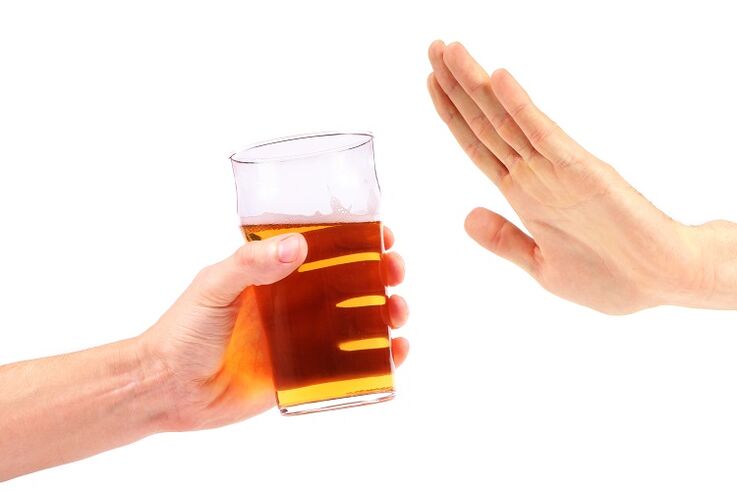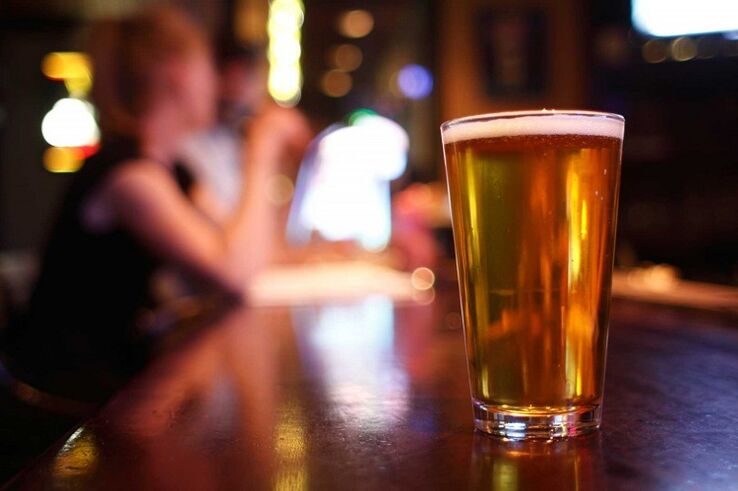At the end of a busy day at work, you want to relax with a glass of wine or a can of beer. It seems what if you drink alcohol "for pleasure" every day?
So-called "evening alcoholism" does not arouse open disapproval from society. At first glance, nothing bad happens: there is no instant withdrawal syndrome from a glass of vodka. However, frequent alcohol consumption affects the human body, regardless of the "elite" of drinks. Young, successful people between the ages of 25 and 40 who buy expensive cognac don't even notice the last link in the alcohol chain that is in the same line as them - an unshaven, gaunt man in rumpled clothes. If you suggest that this is your possible future, you will surely be offended. However, if a person drinks alcohol every day, they will soon have to pay not only with money, but also with health, family ties and position in society.
The insidiousness of ethyl alcohol
The amount of alcohol consumed in relation to pure alcohol should not be more than 5 ml / day (women) and 10 ml / day (men). It's best to break it down into several tricks. That is, 25 ml of strong drink, 100 ml of wine, 250 ml of 3-4% beer drunk at the festive table will not do any destructive damage to a woman's body (in men, the amount doubles). However, the frequency of use of even such "harmless" doses makes them dangerous.
The destruction of the body begins gradually. It depends directly on age, health, weight and hereditary predisposition. If these factors come together unfavorably, the first stage of alcoholism may appear in six months or a year. And a person who abuses alcoholic beverages will spend the rest of their life in alcoholic intoxicant.

Mental changes
Since the daily consumption of alcohol aims at the rapid achievement of a psychotropic effect ("relaxation"), a psychological dependence occurs first. After a week, a person gets used to relieving stress in this way, without a sobering break, and after a year, forgets that it could be otherwise.
The main symptoms of what happens in the body:
- Insomnia. Despite the strong hypnotic effect of ethanol, the phases of healthy sleep are disturbed under its influence. Sleep becomes either narcotically deep or vice versa - short, restless. Subsequently, a person only needs to drink alcohol to fall asleep.
- Nervousness and irritability. The constant presence of alcohol in the blood leads to a lack of oxygen in the brain. Along with insomnia, this leads to fatigue, which earlier drinking provokes. This creates a "vicious circle".
- Lowering the criticality threshold. A person begins to react sharply to comments ("Yes, I drink all the time, but what's so terrible about that? "), Constantly finding new reasons to drink.
- Find a reason. Gradually, festive celebrations and small cans are being replaced by copious drinks on the television every evening. The patient is ready to blame the whole world for a formal reason to take another dose.
- Growing aggressiveness. Most domestic crime occurs during the first and second stages of alcoholism. Imaginary courage makes you want to adventure, the case often ends in fights.
Physiological changes
The consequences of long-term alcohol consumption are irreversible disorders in the body.
- Change in blood composition. Literally a few hours later, glucose levels drop, thrombus formation increases, and blood flow deteriorates.
- Avitaminosis. Against the background of general intoxication, vitamin deficiency seems to be a minor problem. Gradually, however, it leads to hair loss, destruction of tooth tissue, indigestion, and decreased immunity. Perhaps the development of anemia, early dementia, acute clinical depression.
- Aging effect. The classic signs of an alcoholic are swelling of the face, vascular "stars" on the cheeks, pale or purple-cyanotic skin. The person looks 10-15 years older than the passport age. The appearance of women changes particularly quickly.
- Destruction of nerve cells and tissues of the internal organs. Absorbed through the esophagus, ethanol with bloodspreads to every cell in the body and gradually affects the liver, kidneys, stomach and brain.
Big belly and thin legs - all the "pleasures" of beer alcoholism
Beer is one of the most insidious drinks. Shops offer a large selection of the most varied of sorts, commercials urge you to "cool down". An initially low level of mental alertness, which is triggered by strong alcohol, leads to an increase in local beer alcoholism.
In contrast to vodka, beer has a lower calorie content, is easier to digest and has a slight hangover syndrome. However, if you drink it daily, the effects are the same.
The elements contained in beer influence the production of hormones. In men with beer addiction, breasts grow, fat is deposited on the stomach and sides, the tone of the voice becomes higher, impotence develops. When a woman drinks a lot of beer, she takes on masculine features: her voice becomes coarse, antennae begin to grow above the upper lip, the figure becomes stocky, masculine.
Beer alcoholism gradually destroys the endocrine system. Infertility, thyroid tumors, diseased pancreas - this is just a small list of frothy beverage abuse problems.
But beer has the most damaging effect on the heart. In people who regularly drink up to 3-5 liters of beer per day, the volume of the heart muscle increases many times over. The so-called "bovine heart" effect occurs, which doctors refer to as cardiomegaly. Muscle tissue gradually degenerates, shortness of breath occurs, heart rhythm is disturbed. In the future, the "bull's heart" threatens with serious complications.

It is important to remember that small doses of ethanol in beer lead to the development of alcohol addiction. It's just a lot more difficult to track down.
Is the Truth in Wine?
When talking about the relative usefulness of wine, doctors mean drinks that are products of grape fermentation with a strength of no more than 13%. A glass of dry wine a week does no harm.
However, excessive passion for them has the same sad consequences that occur when drinking alcohol. Wine causes the destruction of the brain's limbic system, which is responsible for memories and emotions. Wine abuse leads to memory loss, dementia, premature dementia and impaired consciousness.
Red wine is contraindicated for migraines, high blood pressure, diabetes, gastritis. White wine has a negative effect on the pancreas and nerve cells in the brain.
Dessert wines are high in calories, the combination of sugar and preservatives enhances the negative properties of ethanol.
Champagne wines, due to the saturation with carbon dioxide, accelerate the absorption of alcohol into the blood. How much can you drink at a festive table so as not to get drunk on champagne? Literally a glass. In addition, individual reactions can be unpredictable.
Alcohol and chemistry
Can I drink low-alcohol beverages while taking medication? The medical answer will be categorical: No!
Even "harmless" antipyretics like aspirin and paracetamol, when combined with ethanol, can cause sudden gastric bleeding or anaphylactic shock.
During treatment, it is worth avoiding even small amounts of alcohol in the evening. Ethanol increases the resistance of pathogenic bacteria to antibiotics, increases the side effects of many drugs. In addition, the disease itself is a contraindication.
You shouldn't experiment with what happens if you drink alcohol while taking medication. There is a high likelihood of complications, including fatal ones.
Memo for the environment
It's worth worrying if:
- Your loved one drinks more alcohol every day (including low-alcohol drinks);
- became irritable, nervous;
- he has symptoms of intoxication (hangover syndrome);
- complains of depression, insomnia, nightmares;
- No vacation in the house goes by without alcohol.
When symptoms first appear, it is important to convey the need for treatment to the person. However, you cannot talk to an alcoholic while under the influence of intoxicating beverages or suffering from a hangover. Choose a suitable moment, do not insist, speak calmly and gently. If necessary, seek professional help.
Remember, if one of the spouses drinks alcohol, there is a risk that the other spouse will become addicted.


























